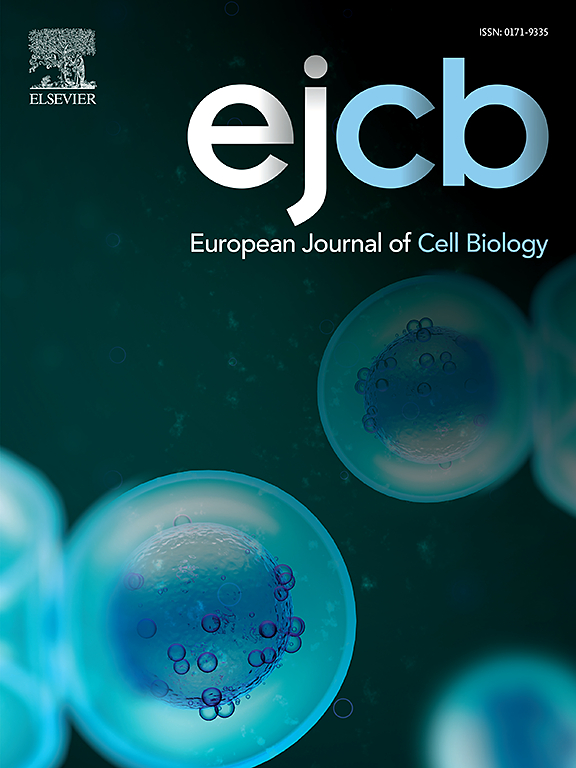Transient pharmacological inhibition of SUMOylation during pregnancy induces craniofacial malformations in offspring mice
IF 4.3
3区 生物学
Q2 CELL BIOLOGY
引用次数: 0
Abstract
Cell identity plays a pivotal role in embryo development, guiding the process of cellular differentiation essential for tissue and organ formation. Post-translational modification by the ubiquitin-related SUMO protein acts as a chromatin barrier to cell fate conversions. While SUMOylation deficiency is incompatible with mammalian embryonic development, haploinsufficiency for the SUMOylation machinery's E1 enzyme, UBA2, leads to various phenotypic traits in humans, including craniofacial malformations and aplasia cutis congenita. To investigate SUMO's role in organogenesis, SUMOylation was transiently suppressed using a specific pharmacological inhibitor, TAK981, administered during the early post-implantation embryo stage. A high-concentration injection led to embryonic lethality associated with epigenetic scars and alterations in nuclear and nucleolar integrity observed in treated embryo-derived fibroblasts. Lower-concentration injections resulted in viable mice with craniofacial deformities often accompanied by hydrocephalus, syndactyly and an aplasia cutis-like phenotype. Transcriptomic analysis revealed the repression of genes involved in neural crest differentiation in the TAK981-treated embryos as well as the overexpression of the Fgfr gene family in the adult TAK981 progeny. These genes, expressed in neural crest derivatives, are known for their gain-of-function mutations linked to human craniosynostosis syndromes, suggesting that potential overactivation of the FGF signaling pathway may contribute to the malformations observed in TAK981 progeny. Altogether, disruption of the SUMOylation/deSUMOylation equilibrium during a short embryonic period is sufficient to induce persistent cellular defects and transcriptional alterations, resulting in severe offspring malformations. In conclusion, the SUMO inhibitor TAK981 has teratogenic effects, disrupting normal fetal development and causing congenital disabilities reminiscent of traits observed in UBA2-related syndrome.
妊娠期间短暂的药物抑制SUMOylation诱导子代小鼠颅面畸形
细胞身份在胚胎发育中起着关键作用,指导组织和器官形成所必需的细胞分化过程。泛素相关SUMO蛋白的翻译后修饰作为细胞命运转换的染色质屏障。虽然SUMOylation缺陷与哺乳动物胚胎发育不相容,但SUMOylation机制的E1酶UBA2的单倍不足导致人类的各种表型特征,包括颅面畸形和先天性皮肤发育不全。为了研究SUMO在器官发生中的作用,在胚胎着床后的早期阶段,使用一种特定的药物抑制剂TAK981暂时抑制SUMO化。高浓度注射导致胚胎致死性,在处理的胚胎源性成纤维细胞中观察到与表观遗传疤痕和细胞核和核仁完整性改变相关的胚胎致死性。低浓度注射导致存活小鼠颅面畸形,通常伴有脑积水、并指畸形和皮肤发育不全样表型。转录组学分析显示,在TAK981处理的胚胎中,参与神经嵴分化的基因受到抑制,Fgfr基因家族在成年TAK981后代中过度表达。这些基因在神经嵴衍生物中表达,以其与人类颅缝闭锁综合征相关的功能获得突变而闻名,这表明FGF信号通路的潜在过度激活可能导致TAK981后代中观察到的畸形。总之,在胚胎期短时间内破坏SUMOylation/deSUMOylation平衡足以诱导持续的细胞缺陷和转录改变,导致严重的后代畸形。总之,SUMO抑制剂TAK981具有致畸作用,破坏胎儿正常发育,导致先天性残疾,与uba2相关综合征的特征相似。
本文章由计算机程序翻译,如有差异,请以英文原文为准。
求助全文
约1分钟内获得全文
求助全文
来源期刊

European journal of cell biology
生物-细胞生物学
CiteScore
7.30
自引率
1.50%
发文量
80
审稿时长
38 days
期刊介绍:
The European Journal of Cell Biology, a journal of experimental cell investigation, publishes reviews, original articles and short communications on the structure, function and macromolecular organization of cells and cell components. Contributions focusing on cellular dynamics, motility and differentiation, particularly if related to cellular biochemistry, molecular biology, immunology, neurobiology, and developmental biology are encouraged. Manuscripts describing significant technical advances are also welcome. In addition, papers dealing with biomedical issues of general interest to cell biologists will be published. Contributions addressing cell biological problems in prokaryotes and plants are also welcome.
 求助内容:
求助内容: 应助结果提醒方式:
应助结果提醒方式:


